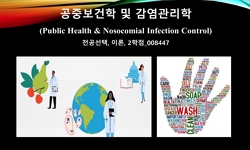Background: Close surveillance of Legionella in the plumbing systems of medical institutions is required because of the higher morbidity and mortality of nosocomial legionellosis. We experienced an outbreak of legionellosis in a university hospital, m...
http://chineseinput.net/에서 pinyin(병음)방식으로 중국어를 변환할 수 있습니다.
변환된 중국어를 복사하여 사용하시면 됩니다.
- 中文 을 입력하시려면 zhongwen을 입력하시고 space를누르시면됩니다.
- 北京 을 입력하시려면 beijing을 입력하시고 space를 누르시면 됩니다.

이산화염소 투입 시스템 도입을 통한 레지오넬라 유행 종식과 환경 관리 = Outbreak of Nosocomial Legionellosis Managed by Adoption of Chlorine Dioxide Infusion System
한글로보기https://www.riss.kr/link?id=A108637598
- 저자
- 발행기관
- 학술지명
- 권호사항
-
발행연도
2023
-
작성언어
Korean
- 주제어
-
등재정보
KCI등재
-
자료형태
학술저널
-
수록면
135-142(8쪽)
- DOI식별코드
- 제공처
- 소장기관
-
0
상세조회 -
0
다운로드
부가정보
다국어 초록 (Multilingual Abstract)
Background: Close surveillance of Legionella in the plumbing systems of medical institutions is required because of the higher morbidity and mortality of nosocomial legionellosis. We experienced an outbreak of legionellosis in a university hospital, managed with a chlorine dioxide infusion system.
Methods: Multiple contaminations with Legionella were reported in the annual water surveillance in June 2019. A task force was established to prevent the outbreak of legionellosis, and the entire plumbing system of the hospital was investigated. Initial measurement was done according to the action manual of the Korean Disease Control and Prevention Agency, including cleaning of hot water tanks, superheating and flushing, point-of-use management (change of showerheads and taps on washstands), and application of filters in higher-risk areas. Further shock hyperchlorination for the cooling tower and cleaning of the water tank were performed since persistent contamination was reported in these areas. Nevertheless, there was an outbreak of three presumable cases of in-hospital legionellosis. A continuous infusion of chlorine dioxide (ClO2) was planned to decontaminate the hospital’s plumbing. Equipment for ClO2 infusion was installed by May 2020, with terminal monitors of residual chlorine and a feedback system. A repeated environmental culture study was also planned. Furthermore, a preemptive surveillance system including active monitoring for patients tested with Legionella urinary antigen was developed, and a newer response manual for legionellosis was distributed.
Results: Isolation of Legionella in hospital water was first noted in June 2019. Since then, Legionella has been identified in 6 out of 47 samples in five surveillances by the public health center. Furthermore, 6 out of 85 samples were reported to be positive for Legionella by inhospital water cultures. Two patients were diagnosed with nosocomial legionellosis within 3 months of the initial response. After the installation of the ClO2 continuous infusion system in May 2020, no isolation of Legionella was reported in the next two whole environmental surveillance. No further cases of bacterial inoculation or Legionella infections have been reported so far.
Conclusion: The outbreak of nosocomial legionellosis was successfully terminated with the continuous infusion of ClO2 into the premise plumbing system of the hospital. Sporadic outbreaks of hospital-acquired legionellosis have continued; therefore, individualized reinforcement of the response system to prevent nosocomial legionellosis is required.
동일학술지(권/호) 다른 논문
-
- 대한의료관련감염관리학회
- 김지연
- 2023
- KCI등재
-
과산화수소 공간소독기계를 사용한 카바페넴분해효소 생성 장내세균 및 반코마이신 내성 장알균 소독효과
- 대한의료관련감염관리학회
- 이건영
- 2023
- KCI등재
-
의료기관에 종사하는 직원에 대한 A형 간염과 홍역 항체 선별 검사의 유용성
- 대한의료관련감염관리학회
- 홍혜경
- 2023
- KCI등재
-
- 대한의료관련감염관리학회
- 에르데네투야 볼로르마
- 2023
- KCI등재




 KCI
KCI





